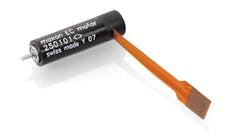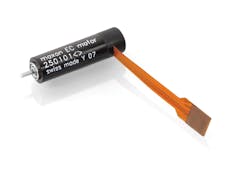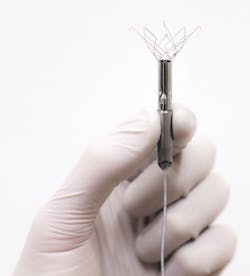Cardiologists will soon be fitting patients’ aortas with tiny pumps to help diseased hearts rest and heal, thanks to engineers at Procyrion Inc., Houston, who designed a circulatory-assist device. It’s called the Aortix and it accelerates native bloodflow with entraining jets, creating better overall circulation. In one test, the device decreased the heart’s energy consumption by 39% by making it pump less hard and more efficiently while it’s healing.
The axial-flow pump, 6 mm in diameter × 65-mm long, is suitable for heart-failure patients too sick for medication, as well as active patients looking to prevent progressive heart damage. Other devices assist the heart but are bulky and must be surgically implanted. What’s worse, many replace heart function rather than support it, so device failure can be fatal.
In contrast, cardiologists can feed the Aortix in the femoral artery and push it into the descending thoracic aorta using a catheter. Then the catheter sheath retracts and self-expanding nickel-titanium anchors affix the pump to the aortic wall. This location (downstream of the carotid arteries) prevents heart or valve damage, simplifies insertion, and eliminates the risk of thrombotic stroke, a problem for patients using ventricular-assist devices. The pump doesn’t obstruct natural bloodflow, either, so failure isn’t life threatening, and doctors can easily retrieve and replace it.
The continuous-flow pump has a dc motor that drives an impeller at speeds to 30,000 rpm. Flexible power leads tunnel to a transdermal exit site or a transcutaneous energy-transfer (TET) subsystem. External battery packs and controllers are hot swappable, so patients can change them without stopping the device. Versions with a TET charger let patients wirelessly charge an implanted battery without power leads through the skin, which reduces risk of infection.
Procyrion worked with maxon precision motors inc., Fall River, Mass., to design the pump’s motor — an EC6 motor with a custom electrical lead, shaft length, and bearings. The motor has a high-efficiency core that generates enough torque for the high impeller speed, but also extends battery life and produces less heat so it doesn’t damage circulating blood. New versions of the motor have magnetic torque drives, so the motor mounts inside a hermetically sealed chamber and magnetically couples with the impeller suspended between two bearing surfaces. This configuration prevents blood from entering the motor core. Such couplings are common in giant oilfield pumps, and maxon helped adapt it to the Aortix. Likewise, Procyrion adapted jet pumping (fluid entrainment) common in mining, refrigeration, in-line mixing, and industrial applications to the medical device. The jet-pump configuration runs for more than 8 hr on a single battery pack.


